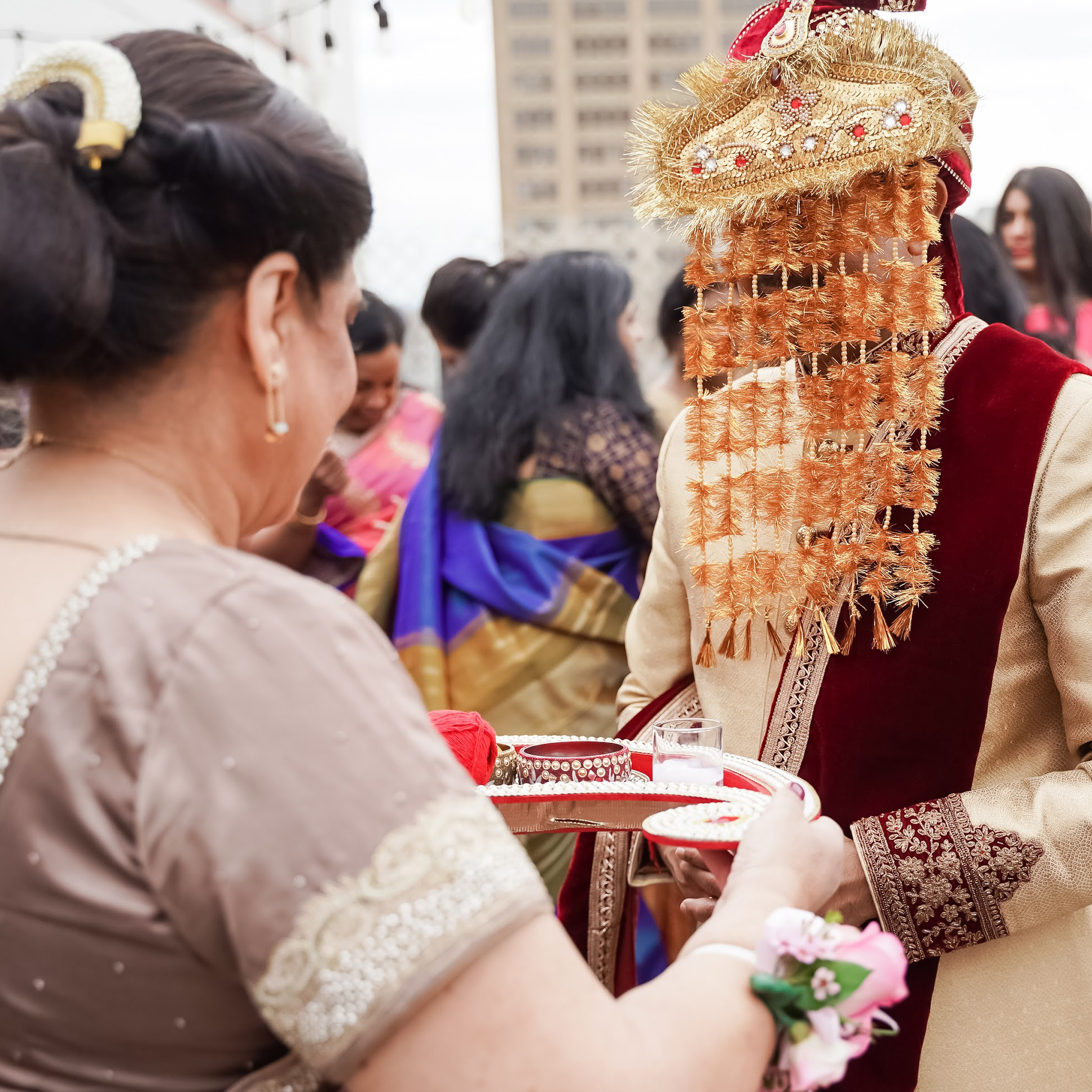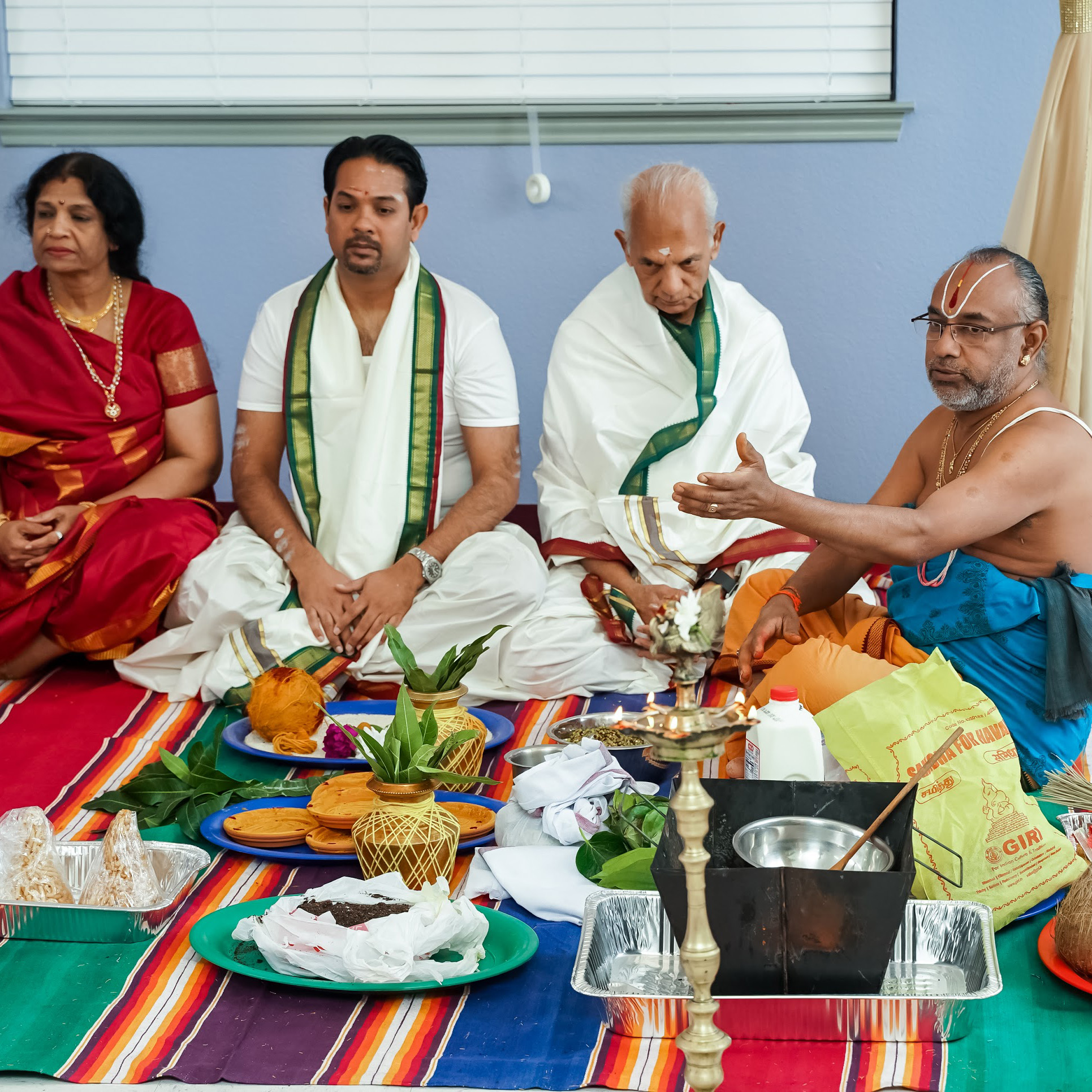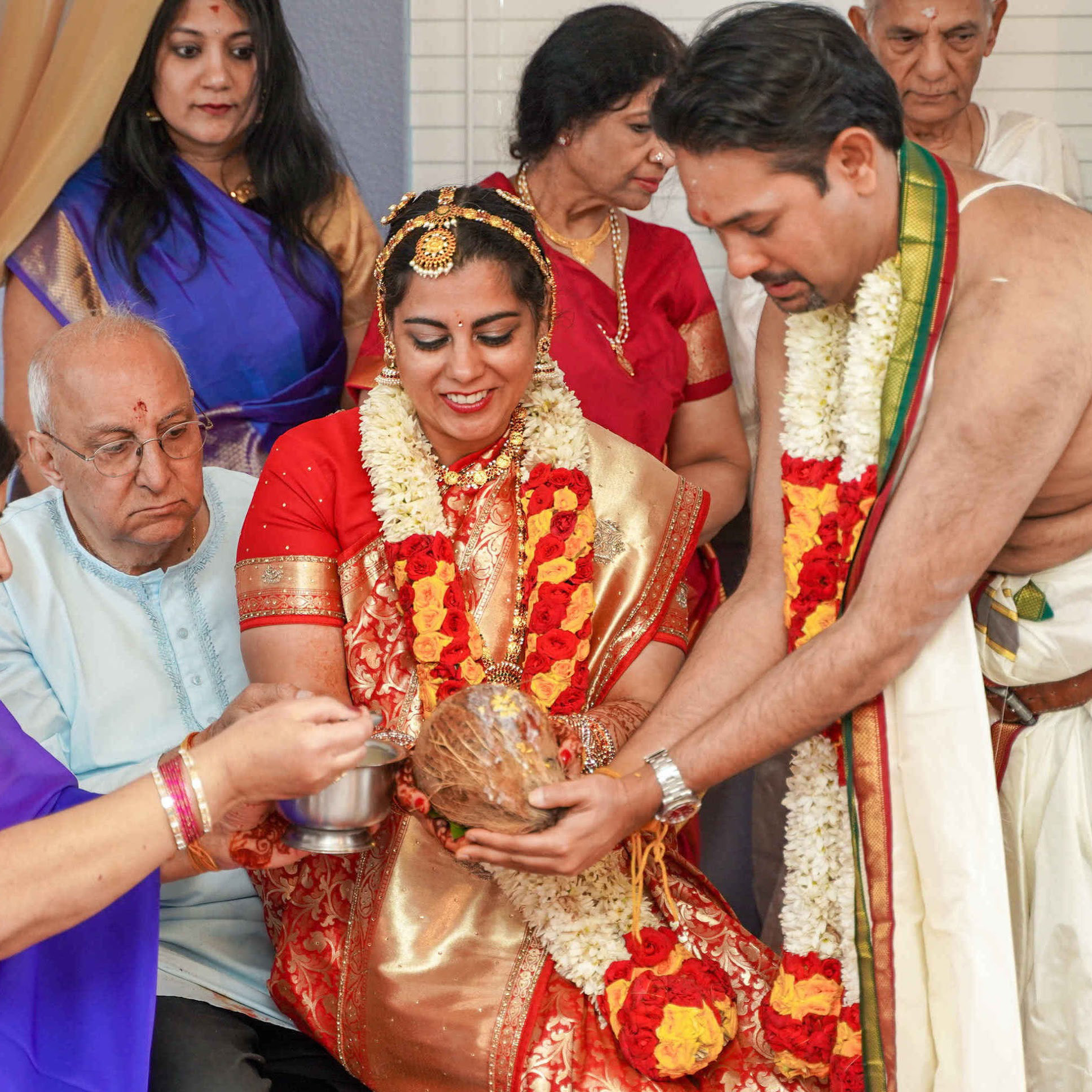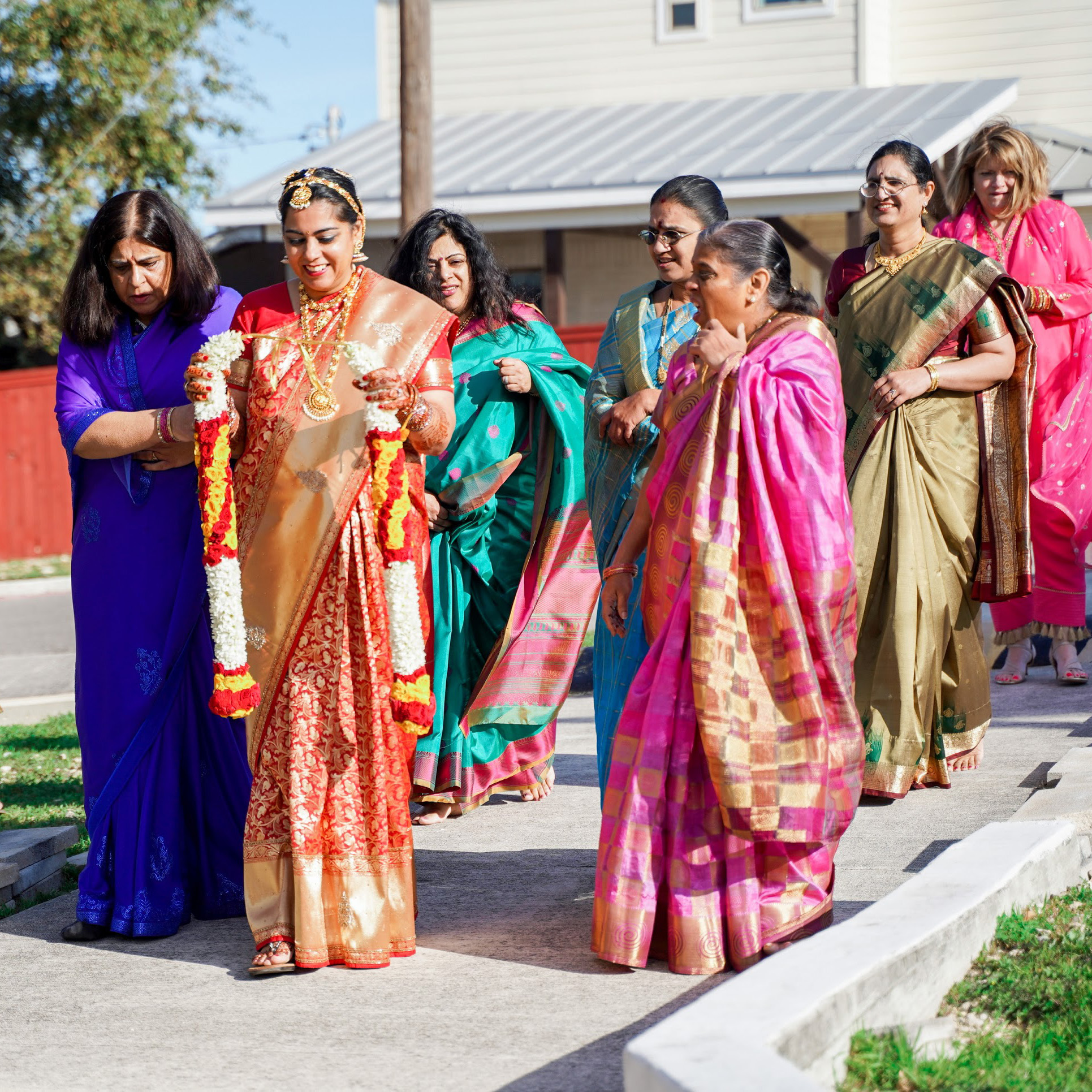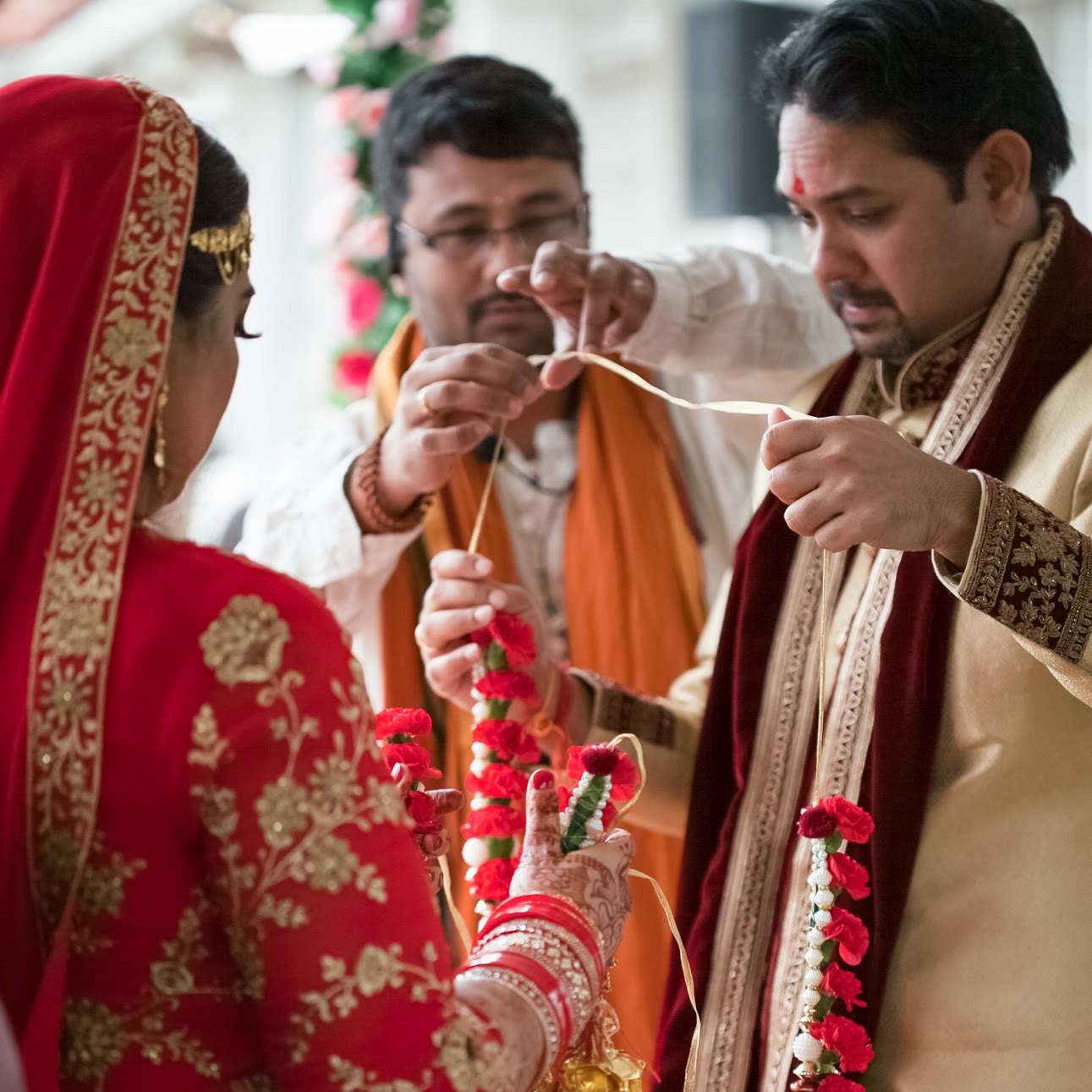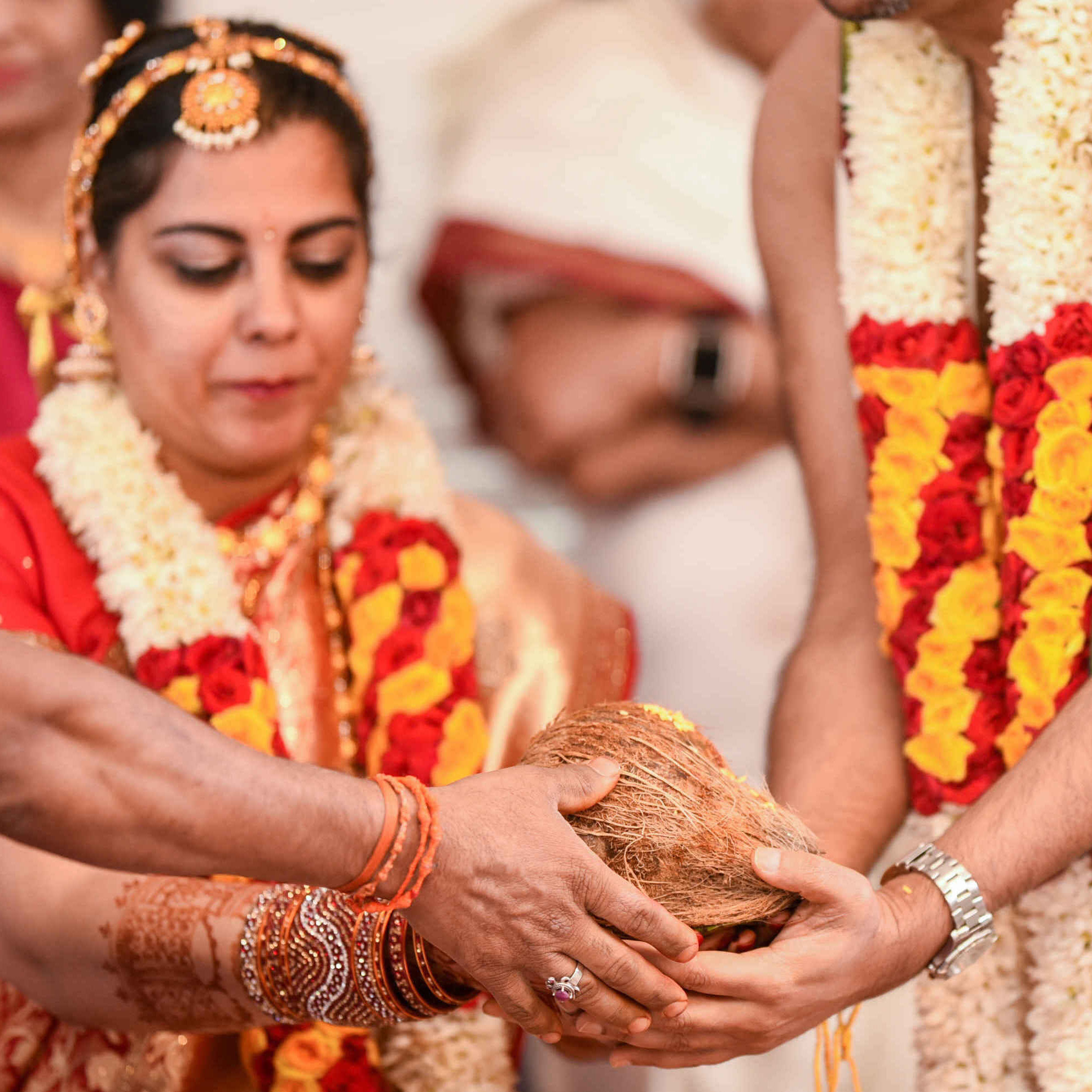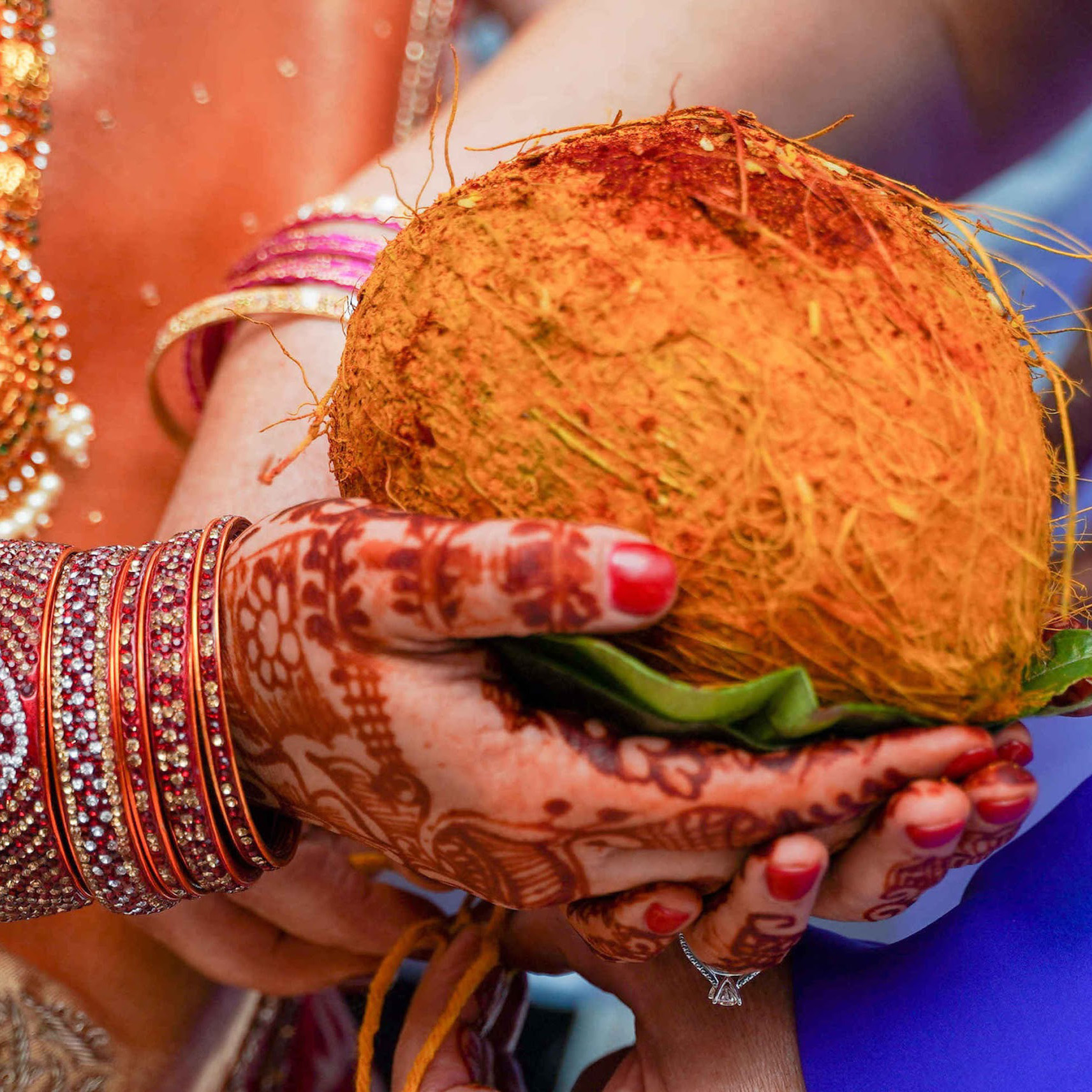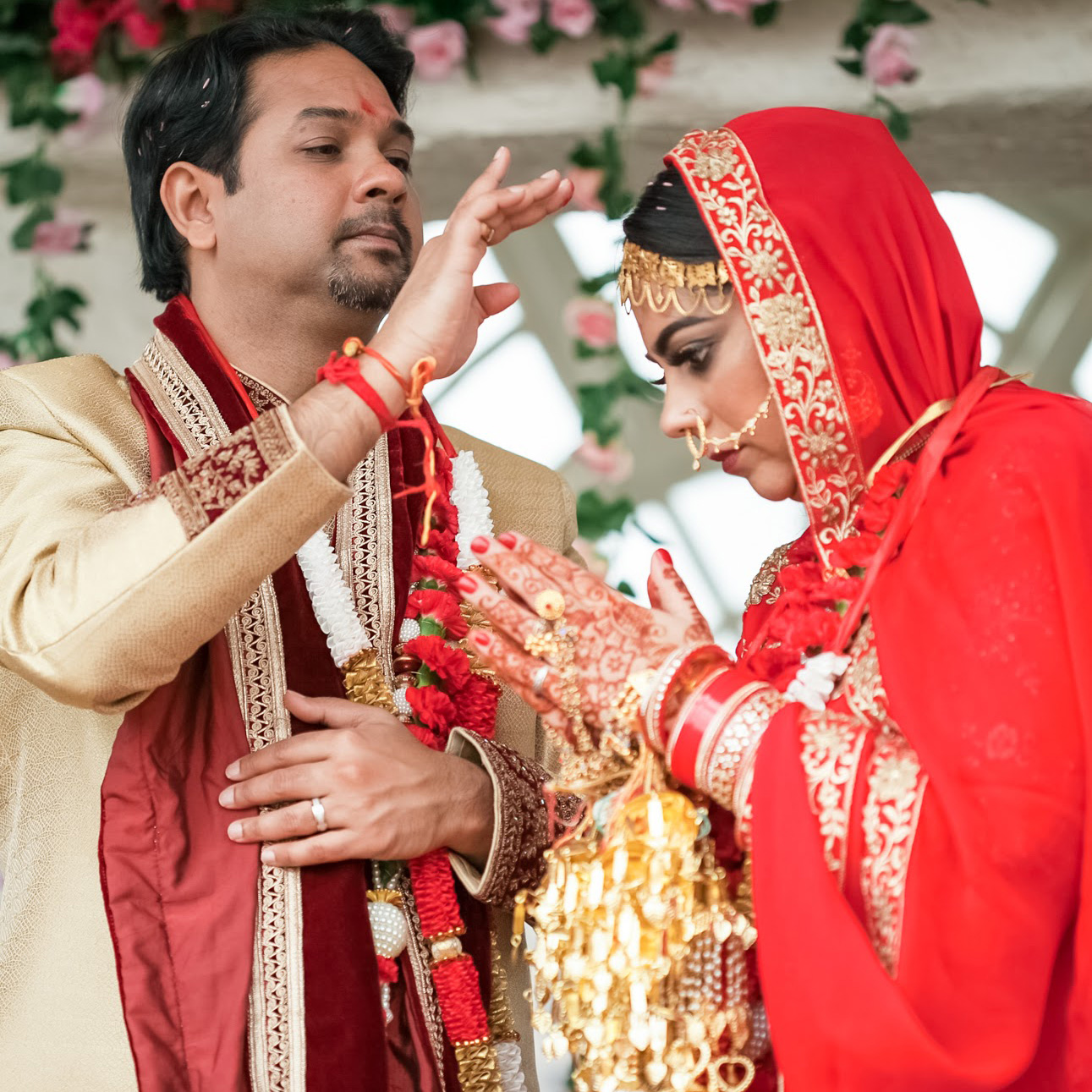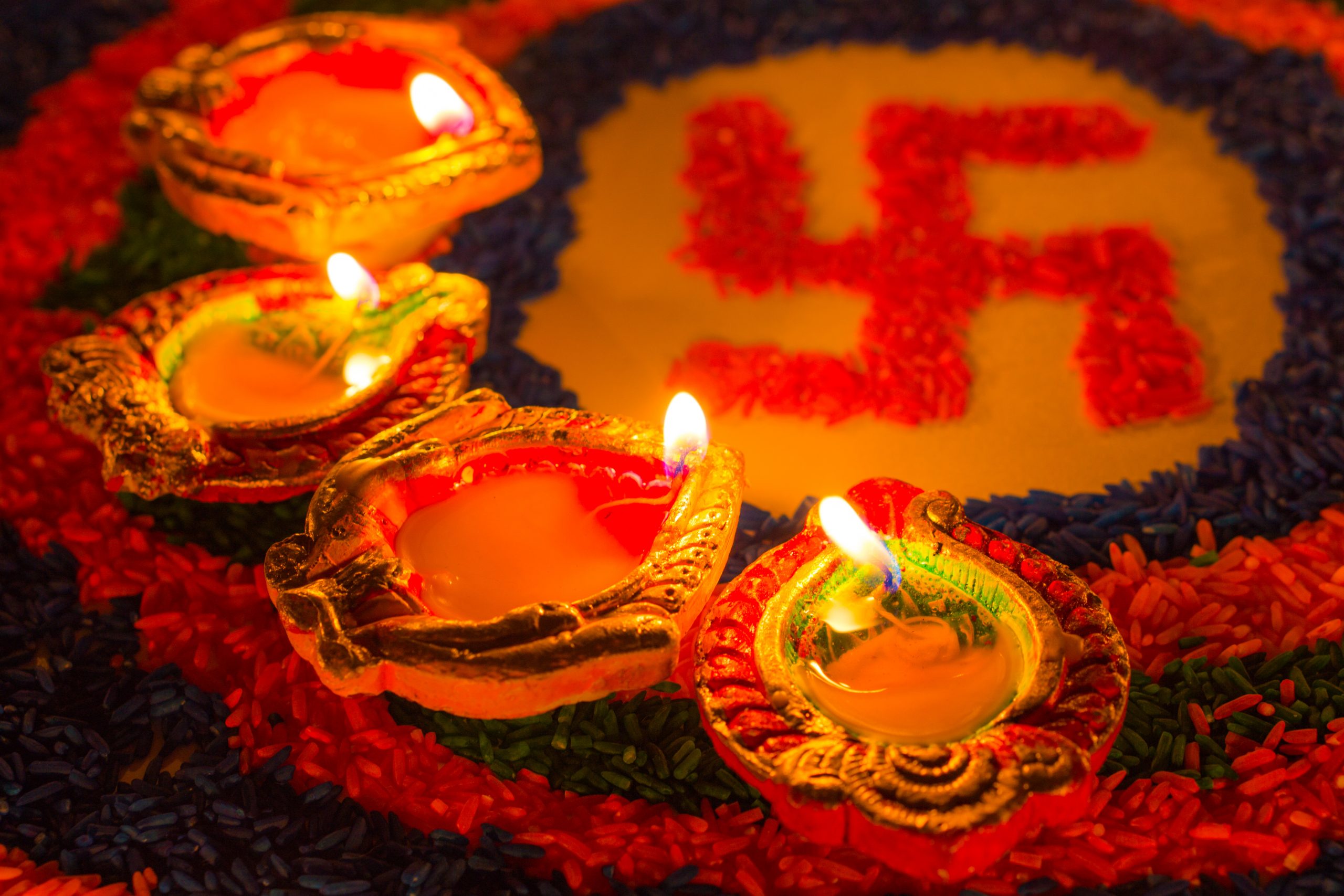In Hinduism, marriage joins two individuals or embodied, eternal souls for the purpose of jointly pursuing the purushartha or four aims of life: dharma, artha, kama, and moksha. Marriage is considered a spiritual partnership which unites the minds, bodies, and souls of the partners in this and future lives, and builds sacred bonds between their two families.
Many elements of the Hindu wedding ceremony have remained virtually unchanged for thousands of years. The ceremony consists of a series of rituals and ceremonies to promote righteous living and the sharing of values such as selfless love, kindness and compassion, honesty and fidelity, and mutual respect. The rituals are originally in Sanskrit, the mother of all Indian languages.
There are many elements and rituals both before and after the actual wedding ceremony, which vary by deity tradition, linguistic region, community, and family. While these vary from community to community, two of the more common pre-wedding ceremonies are the haldi (also known as a pithi) ceremony and the mehndi ceremony.
The haldi ceremony is a ritual in which a mixture of turmeric (haldi), oil and water are applied to both the bride and groom prior to the wedding. Family members will wipe the mixture on the couple and offer their blessings and ward off any evil spirits so that they can start their new life obstacle free.
 Another popular ceremony is the mehndi (henna) ceremony, which occurs a day or two prior to the wedding ceremony. In this ceremony, the bride is decorated on her hands and feet with henna powder which is wet when applied but dries to an orangish-red stain. It said that the deeper the color of the bride’s mehndi, the happier the bride and groom’s marriage will be. Bridal mehndi designs often incorporate ornate thematic designs of well wishes, joy, and love. Often, the groom’s name is usually hidden somewhere in the intricate patterns and game rules dictate he must find it. While traditionally, mehndi was reserved for the bride and the women in her family, it is now common to see the groom also get a bit of mendhi as well.
Another popular ceremony is the mehndi (henna) ceremony, which occurs a day or two prior to the wedding ceremony. In this ceremony, the bride is decorated on her hands and feet with henna powder which is wet when applied but dries to an orangish-red stain. It said that the deeper the color of the bride’s mehndi, the happier the bride and groom’s marriage will be. Bridal mehndi designs often incorporate ornate thematic designs of well wishes, joy, and love. Often, the groom’s name is usually hidden somewhere in the intricate patterns and game rules dictate he must find it. While traditionally, mehndi was reserved for the bride and the women in her family, it is now common to see the groom also get a bit of mendhi as well.
Wedding rituals embrace the five elements of nature: fire, earth, water, air and ether, and include invocations to the Divine, followed by vows. It is conducted in the presence of a sacred fire, representing the God of Fire (Agni). Agni exists as a divine and impartial witness to the vows taken by the bride and groom and symbolizes the light of knowledge which is the key to everlasting happiness.
There are significant items used in Hindu wedding ceremonies that hold particular symbolism:
- Fire: Dispels the darkness of ignorance
- Water: Nourishes life
- Earth: Dispels inauspiciousness (rice as symbolic of earth and bounty)
- Coconut: Symbolizes fertility
- Sindhur: Symbolizes auspiciousness
While many of the rituals may involve family elders or the women of the household, Hindu priests generally perform the actual marriage rituals.
The following are common segments to a Vedic ceremony:



